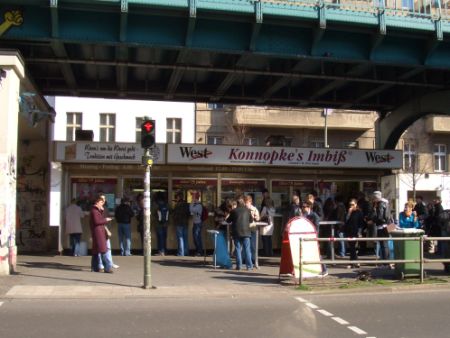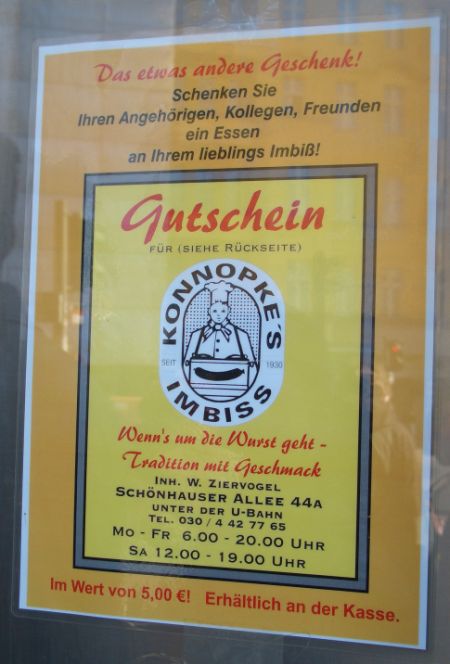von Roland Hachmann | Mai 31, 2007 | Ad News, Blog, Digital Culture, Marketing
Even though the discussion about the life after the 30 Sec. Spot continues, there are still some amazing examples of how TV advertising produces visible results.
There is a TV spot for German Telekom currently running in Germany, that is quite nicely done, a few nice special effects, absorbing visuals and surprising scene-cuts. But really nothing special.
Yet, the spot draws you in, fascinates you (well, at least me). And that’s mainly because of the song they’ve chosen. It’s „Paint it Black“ by the Rolling Stones and a search on Technorati for this song shows that many people talk about it.
Indeed, if you look at Yahoo! Clever (Yahoo! Answers) in Germany, there are many people looking for the song in the Telekom Ad.
And, furthermore: this song, even though a few decades old, made it all the way to Nr. 2 of the German iTunes charts! Listed before Maroon 5 and P!nk, for example!
The product of German Telekom launches on the 4th of June, so we don’t know yet, how successful this will be.
But we certainly know already, that the TV spot has helped the Rolling Stones catapult one of their classics all the way up the charts. I find this rather amazing.
von Roland Hachmann | Mai 20, 2007 | Blog, Digital Culture
TechCrunch lists the many german copycats of web 2.0 sites. Didn’t know there were so many. And it makes you wonder: How come that we moved from a nation of thinkers and inventers to a nation of copycats?
“Web 2.0†is a term that brilliantly translates around the world, but many of the sites that are commonly associated with it have a language barrier for international audiences […]. While English certainly isn’t foreign to Germans, it has still slowed their adoption – and network effects, which have been a driving force, are often tied to language and reach as well. What’s been the consequence in Deutschland? A mushrooming of German copycats that have localized and copied their US role models, sometimes down to the last pixel.
But is not only about the adoption amongst users. It is also our inhibiting environment:
In short: Germany is buzzed right now and the biggest question for the startup scene is how the many look-alikes will develop over the next year. You’ll often hear that investors are hesitant to invest in ideas that “haven’t been proven in the US yet†but there are several other factors at work here: Germany is generally more risk-averse, the bureaucracy is more cumbersome, and entrepreneurial networks like Silicon Valley aren’t as strongly developed.
Sad, but true.
von Roland Hachmann | Mrz 25, 2007 | Blog, Marketing
Ok, I didn’t actually stay until Sunday. I was back Saturday Evening already, since I need to do some work today. Unfortunately, because Berlin is always fascinating, you could spend endless hours walking down the streets in one of the many different parts of the city.
One thing we visited worth mentioning, apart from the huge ADC exhibition, was the most famous currywurst place in Germany (or so they say):

Konnopke’s fast food exists since 1930. 10 years before the McDonalds Brother started their business. But the rest is a matter of Ray Croc injecting business understanding and franchise models, as well as the difference between free market economies and communism (yes, Konnopke is in the former East Berlin).
Somehow, this place has stayed a uique location even though the demand is incredible. On a saturday aound lunchtime, the cue is nearly 20 meters long. And the service is not slow – it took less than one minute to take my order and deliver the currywurst with fries. Usually it takes longer at a regular McDonalds.
I was particularly fascinated by their marketing efforts of selling vouchures. I haven’t seen that at any fast food place like that, yet.

For those who don’t know German: it basically advertises the fact that you can now give fast food vouchures to your friends, colleagues, etc.
von Roland Hachmann | Mrz 22, 2007 | Ad News, Blog, Marketing
… we’re going to Berlin.
The German Direct Marketing Awards are being awarded in Berlin tomorrow evening. And we’re on the shortlist…
Since we’re going to the ADC exhibition on Saturday, we’ll be staying until Sunday. So does anyone have a good suggestion for Saturday night in Berlin?
von Roland Hachmann | Feb 6, 2007 | Ad News, Blog, Digital Marketing, Marketing, Online Advertising
Clickz references a study about user generated content – or consumer generated content, as it should rather be called. This is from August 2006, but nevertheless quite interesting, as there seems to be some interesting findings even related to „traditional“ internet advertising:
Almost three-quarters of people who publish amateur video content online are under 25, and of those, 86 percent are male. […] Other findings of the „Generator Motivations Study“ include that as many as 73 percent of content generators notice Internet advertising, a much higher ration than what’s found in the male 18 to 24 year-old demographic as a whole. Also, 57 percent of all content creators surveyed said they are willing to feature brands in their videos, and many within the group have already done so. […] The report suggests opportunity for marketers, if campaigns are executed properly. „Approaching the right communities, with the right tone and incentives can motivate users to generate content featuring brands,“ the report said.
Sounds good, being from Germany, I now wonder if the situation is (or will be) similar in Germany?



 Wo ich sonst so bin...
Wo ich sonst so bin...